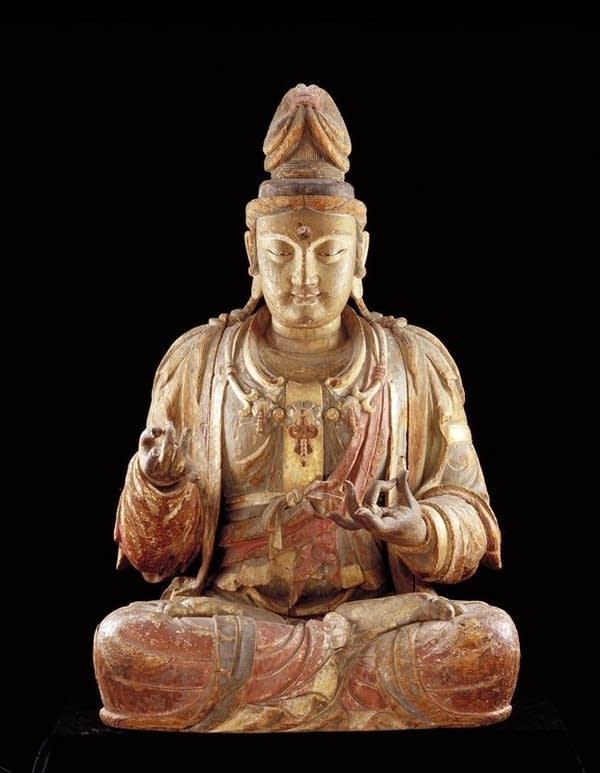MIA invites visitors to connect with the sacred
The lights are low, and the sound of chanting surrounds me. Seated cross-legged on a cushion, I gaze into the serene eyes of the Bodhisattva Guanyin, carved from wood and perched on a pedestal at the front of the room. I sit for some minutes, letting my mind relax and letting go of the chatter and worries that normally fill it.
You'd be forgiven for thinking I'm describing my experience at a recent Buddhist retreat, however this took place in a gallery at the Minneapolis Institute of Arts.
The installation is part of a much larger exhibition focusing on sacred art from around the world.
"We have lots of sacred art in the collection but it's often presented and interpreted in a historical context," explained MIA Curator Liz Armstrong.
Create a More Connected Minnesota
MPR News is your trusted resource for the news you need. With your support, MPR News brings accessible, courageous journalism and authentic conversation to everyone - free of paywalls and barriers. Your gift makes a difference.
"Sacred" looks at objects in the MIA's collection that were never intended for display in a museum, and puts them in a more "practical" setting.
"If you just look at a Buddha in a sculpture court it may have more of an art historical slant on it," Armstrong said. "But if you look at a Buddha with chanting around it and low lights and cushions to sit on, it really creates more of an environment that refreshes the original context of the sculpture."

The exhibition aims to highlight how the objects connect with people's lives by taking them out of the traditional "white box."
"The seating part is really important," Armstrong said. "It might seem self-evident, but it's shocking how many museums don't invite you to sit down."

In conjunction with the exhibition, which runs through July 13, the MIA has coordinated an extensive series of programming on successive Saturdays, ranging from laughing yoga to sacred music to learning how to walk a labyrinth.
"Connecting with the different senses is an important part of this," reflects Armstrong.
The MIA also will present two events featuring "On Being" host Krista Tippet. On Jan. 23, she'll interview artist Ann Hamilton, who is known for performance art that blends music, space, video and movement in ways that evoke a meditative process.
On March 27, Tippett will talk with sculptor Dario Robleto, who is known for taking a shamanistic approach to art making, connecting the past with the present. Both interviews will be recorded for a future "On Being" broadcast.

Ultimately, Armstrong said, the exhibition -- and the programming surrounding it -- is about introducing visitors to different beliefs and traditions.
"The exposure to other cultures and other ideas is one of the great things a museum of world art can do," she said. "We have the opportunity here to introduce ourselves to all kinds of ideas about culture and spirituality."